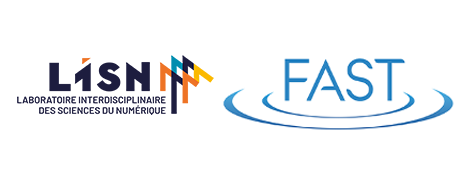14 décembre :
Bérengère Abou
(Matière et Systèmes Complexes, UMR CNRS 7057, Université Paris Cité, Paris
)
Intracellular rheology of red blood cells
7 décembre :
Christian Ruyer-Quil
(LOCIE, Université Savoie Mont Blanc)
Conditions aux limites entre un milieu fluide et un milieu poreux isotrope
5 décembre :
Paula Vasquez
(University of South Carolina)
Coupling macro-micro simulations in biological fluids
30 novembre :
Anne-Laure Biance
(Institut Lumière Matière, Université Lyon 1)
Soft nanofluidics
23 novembre :
Romain Vallon
(KTH Stockholm)
Écoulements multi-phasiques : fragmentation de jets liquides et écoulements de Marangoni.
21 novembre :
Charlotte de Blois
(ENS Paris et ESPCI
)
Phoretic and Marangoni Flows: Studying Self-Propelled Water Droplets and Improving the Efficiency of Blue Energy
16 novembre :
Martin Brandenbourger
(IRPHE, Aix-Marseille University)
Towards models of fluid transport in active vascular networks
9 novembre :
Benoit SCHEID
(ULB)
Generation, dynamics and transfer of simple or double emulsions in capillaries
7 novembre :
Jonas Miguet
(Laboratoire MSC, Université Paris Cité )
The serendipity of antibubbles
26 octobre :
Francesco Romano
(Ecole Nationale Supérieure d'Arts et Métiers, Lille)
The fluid mechanics of airway closure in the bronchioles
12 octobre :
Hamid Kellay
(LOMA)
Hydrodynamics experiments using soap films and soap bubbles
28 septembre :
Denis Dumont
(CEA/SPEC/SPHYNX)
A minimal view on phase separation of two-temperature systems
21 septembre :
Francisco Melo
(University of Santiago, Chile)
AVALANCHES GENERATED BY SMALL VIBRATIONS
6 juillet :
Narayanan MENON
(University of Massachusetts)
Wetting, wrinkling, and wrapping of thin elastic sheets
29 juin :
Eric Clément
(PMMH-ESPCI-PSL, Sorbonne University, University Paris-Cité, Paris)
Bacteria exploring Newtonian and non-Newtonian complex fluids: from behavioral variability to medium assisted tumbling
15 juin :
Luca Magri
(Imperial College London, The Alan Turing Institute - London (UK))
Physics-aware machine learning for extreme fluids
8 juin :
Aurélie Dupont
(LiPHy)
Collective motion of fish in complex environments
1 juin :
Sujit Datta
(Chemical and Biological Engineering, Princeton University)
Life in a tight spot: How bacteria spread through complex environments
31 mai :
Sujit Datta
(Princeton University )
Chaos in confinement: How to make shear-thinning fluids flow thicken
25 mai :
Paul PALIES
(Combustion and Propulsion for Aviation Research Center (C-PARC), University of Tennessee Space Institute)
Avancées et Perspectives en mécanique des fluides réactives au C-PARC
11 mai :
Audrey Steinberger
(Laboratoire de Physique, ENS de Lyon)
Structure interfaciale d’un liquide ionique à longue chaîne carbonée
4 mai :
Ricardo Garcia-Mayoral
(Cambridge Univ.)
Modelling the effect of surface texture on wall turbulence
20 avril :
Giuseppe Pucci
(CNR-Nanotec
Consiglio Nazionale delle Ricerche, Istituto di Nanotecnologia, Calabria, Italy.)
Capillary surfers and spinners on a vibrating liquid bath
13 avril :
Elisabeth Guazzelli
(Laboratoire Matière et Systèmes Complexes (MSC), UMR 7057 CNRS, Université Paris Cité.)
Rheology of dense granular suspensions: from Newtonian to Bagnoldian rheology
6 avril :
Frédéric Blanc
(Institut de Physique de Nice)
Rhéologie des suspensions concentrées soumises à des cisaillements croisés
16 février :
Vincent Mons
(Aerodynamics, Aeroelasticity, Acoustics Department - ONERA )
Data assimilation for the characterization of aerodynamic flows
9 février :
Frédéric Alauzet
(INRIA-Saclay)
Impact de l'adaptation de maillage pour les écoulements turbulents en aéronautique. Vers la certification des solutions numériques ?
2 février :
Philippe Brunet
(Laboratoire MSC, Université Paris Cité)
Streaming acoustique près des pointes
26 janvier :
Michele Buzzicotti
(TorVergata Univ., Rome - Italie)
Physics-Informed Data-Driven Tools: From Ideal models to Geophysical systems
12 janvier :
Thomas Gibaud
(Laboratoire de Physique, CNRS, ENS de Lyon)
Carbon black gels: yielding, softening under high power ultrasound, and flow properties
5 janvier :
Mathilde Reyssat
(laboratoire Gulliver, ESPCI)
Active droplets confined in a tube : an active Bretherton problem!
